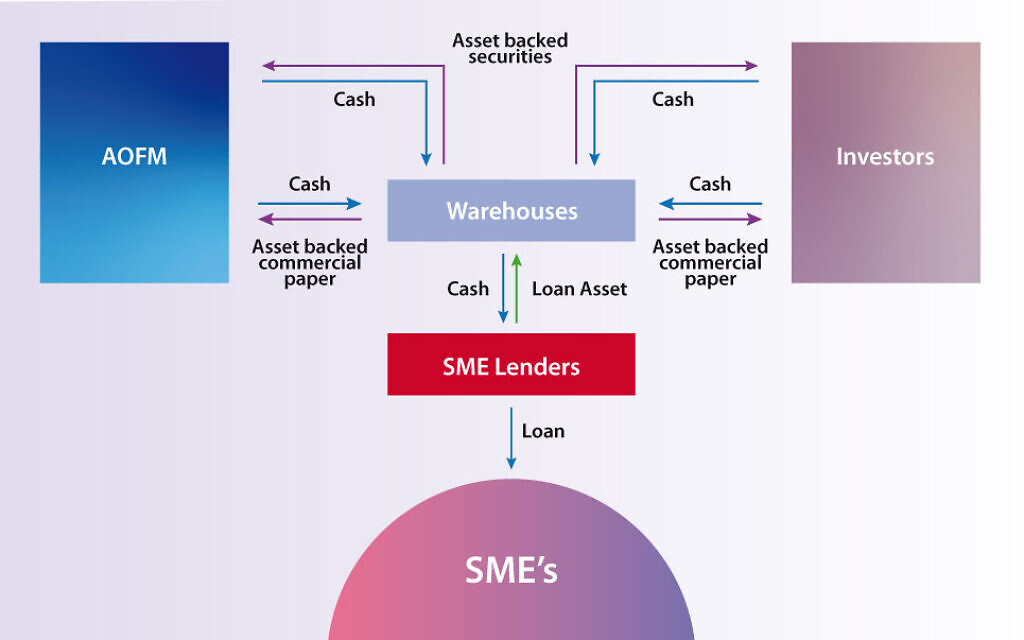SME funding solution or political stunt?
The last piece of legislation passed before the previous Morrison government went to the polls was the Australian Business Securitisation Fund (ABSF) Bill. This makes $2 billion available to SME lenders over the next four years to kickstart the development of a market for securitised SME loans.
Will the ABSF, which is administered by the federal government’s Australian Office of Financial Management (AOFM), solve the funding gap or is it more of a political stunt? This article examines what the ABSF means for small business lenders and borrowers.
Outside of the big four banks, which still control around 80 per cent of the SME lending market, there are dozens of alternative lenders looking to fill the widely talked about SME lending gap, which some experts put at $80 billion. These lenders include fintechs, challenger banks, neobanks, specialist industry and product lenders, plus a whole bunch of smaller shadow and sometimes shady operators. But very few of these lenders will get access to the fund with the AOFM, indicating it will initially limit access to a “small number of transactions”.
So not a huge amount of money will be available to SMEs and only a small number of lenders will be able to access the fund. These might include car and plant and equipment financiers as well as debtor or invoice financiers. The AOFM will offer subsidies to those lenders that meet their criteria being:
i) Meet the AOFM’s guiding principles which cover areas such as risk management, corporate governance, disclosure etc. These hurdles will not be easy to meet, especially for smaller and newer lenders.

ii) Operate close to where the major banks are operating in terms of security provided and the industry.
Funds will not be made available to unsecured lenders, at least for the short to medium term. This end of the market seems to be regarded as too nascent and risky.
The sub-scale nature of the unsecured lending sector, particularly among the fintechs, highlights a catch-22 situation. Their growth is constrained by inability to access affordable capital yet they can’t access affordable capital because they are still relatively small.
The lenders that stand to benefit are those that have a good track record in terms of performance, internal systems and corporate governance and who operate close to banks.
It follows therefore that the SMEs that stand to benefit are those that are meeting or are close to meeting bank credit criteria including security and track record. But for SMEs that currently can’t get a look in with a bank, the ABSF is unlikely to improve access to funding, at least for the foreseeable future.
The government’s dilemma:
i) The Morrison government and the AOFM can’t afford to get this wrong. The history of government involvement in funding of small business is not good. It is both understandable and reasonable that the AOFM takes a cautious approach.
ii) The ABSF is not intended to be a substitute for private sector investment in securitised SME loans. The AOFM’s mandate is primarily one of market development and the aim, over time, is to attract private sector investment such that at some point government intervention is no longer required.
Getting the balance right is the AOFM’s big challenge. Two areas stand out being:
1. The use of subsidies to encourage rather than discourage private investment in securitised SME loans.
2. Choosing lenders in a way that encourages not reduces competition. I have long held the view that the best way to improve competition in the Australian banking market is not endeavouring to get the big four banks to change their ways but rather to make it easier for new entrants to compete. This is a step in that direction.
It is understandable that the government and the AOFM adopt a cautious approach when taxpayers’ money is used to support private enterprises. Over time, a well-managed kickstarting approach should lead to a fully fledged market for securitised SME loans which can only be a good thing for SMEs and the financial markets.
Neil Slonim is a financial consultant, and is the head of Slonim Consulting. The information provided is the opinion of the author. The AJN recommends that readers seek independent financial advice.
Get The AJN Newsletter by email and never miss our top stories Free Sign Up


comments